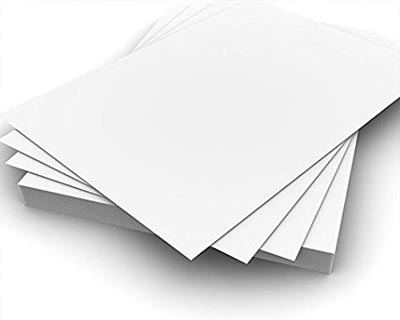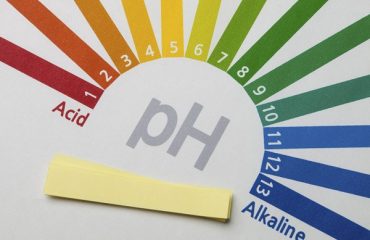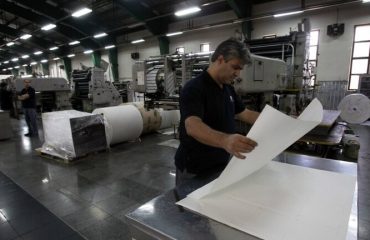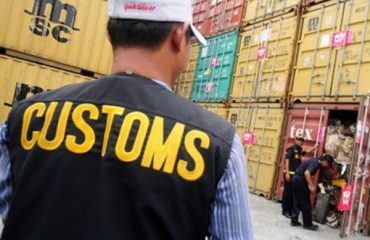Paper
The word paper is derived from a Chinese word called Kaktez. (In Persian it’s called Rokhande or Parzeh)
After the early humans slowly understood the need of visualizing the objects, recording the events, and sending the written messages, they had realized the importance and the necessity of an object to record a lasting work on it and they were constantly trying to achieve it.
History
Clay tablets were used In Mesopotamia, in Egypt (1838 BC) papyrus, and China, they accomplished this by carving on wooden and felt plates with a brush and silk cloth. Since the felting industry was prevalent in the Far East, a Chinese man named “Ts’ai Lun” (105 AD) made pulp from old and spare pieces of silk, and later, made felt sheets. He used it to paint and write on it with a brush and then used bamboo and mulberry trees instead of silk. In fact, he should be considered the first paper inventor in the world.
The evolution of growth
The Chinese workers that were captured by the Persians in the year 751, taught this technique using flax and hemp to the people of Samarkand, and later, it became more prevalent by the Muslim people of Baghdad, Damascus, and even Morocco and Spain. The first paper factory was established in the year 1154 in Spain and the first wood powder mill was established in the year 1190 in France.
In Iran, the papermaking business was first started by establishing a cardboard factory in Karaj in the year 1313 using wastepapers, and during the past 15 years, it has turned into a modern and advanced technology by establishing two paper companies of Pars in Haft Tapeh in the Khuzestan province and Choka factory in Gilan.
Paper raw materials
In general, the paper raw materials are cellulose materials that are provided from different sources:
- Flax, hemp, cotton stems that have long fibers (about 1.2 to 6 mm).
- Stems of plants such as wheat, barley (straw), cane, hemp, etc.
- Needle-leaved trees like pines (with long fibers) or broad-leaved trees like the plane tree (with short fibers and length of about 0.5 – 1.5 mm)
- Various wastepapers or chads and pieces of old cardboard
- Sugarcane pulp fibers
Paper production stages
Turning the wood into small pieces
It is accomplished by using a peeling machine, chip production machine, and moving the chips through a special sieve. After that, pieces with a length and width of at least 4 and 2 cm (regarding the wood) are obtained.
Cooking the wood and pulp production
This process may be pressurized mechanically, that is without using chemical materials and by hot water steam, which is usually used for preparing cheap rough papers like newspaper papers. In the chemical method, at temperatures above 100 C0 and under a pressured condition, sodium hydroxide (in the alkaline method), calcium hydrogen sulfite, in acidic medium (PH = 2-3, bisulfite method) or sodium sulfite (in the sulfite method) are used with a little sodium carbonate. At this stage, a brown pulp is obtained, which is used in preparing cardboard, carton, and rough papers.
Washing the pulp
Alkaline washing is done using a 3% NaOH solution at the temperature of 45- 50 centigrade for about 1-2 hours. This is performed to separate the Lignin and to dilute the pulp.
Chemical operations (decolorization)
It is done in two stages:
- Chlorination, which is performed at PH= 2 and up to temperatures of 25 – 45 centigrade for about 1 hour. At this stage, the remaining Lignin in the paper is turned into a solution that varies between 3 to 15% depending on the used chemical material for cooking.
- Decolorization that is done by sodium hypochlorite (3% solution), chlorine dioxide, hydrogen peroxide, ozone, etc. at pH = 9-10 until only the Lignin is oxidized and cellulose is not affected.
Drying the pulp
At this stage, the pulp is passed through a cleaning machine and sieves with 2 to 3 mm holes to lose most of its water. Then it is passed through strong presses to get rid of the rest of the water.
Pressing, cutting, and packing
After passing the dried pulp through special rollers, it is turned into sheets of paper, cut by the cutting machine in the sizes ordered and needed by the consumer market, and packed.
The paper production process is as follows:
Cellulose fibers are placed in water to absorb moisture and become swollen and soft; they are then spread on a fine wire mesh to dewater the fibers and to subside the wet strands on the surface of the mesh and turn into a board. The fibers come together as they lose water and a kind of hydrogen-like chemical bond is formed at the points where the fibers stack together, which binds them together.
This connection and self-connection is the key to producing a sticky, hard, and sturdy sheet of paper. In this case, no additional glue is needed and the paper is made after the water comes out of the cellulosic fibers and they are dried.
In the Western world, Paper was made from cotton or linen fibers, (mostly old, discarded clothing) before the advent of paper-making machines in the first half of the nineteenth century. Today, at least 70% of the paper produced in the world is made from wood fiber derivatives, and the remaining 30% is from plant fibers such as bagasse, straw, and cane.
Certain types of paper are still made from some plant fibers, such as cotton, linen, and hemp. These papers are used to make banknotes, works of art, high-quality prints, works that need to be preserved and repaired, and to repair damaged old books.
Fiber preparation in the paper industry.
The first step in preparing paper is to separate the fibers from their main substrate in wood. This process is called pulping, which has two main methods:
- Mechanical pulping, in which hard mechanical operations are used to crush wood and remove fiber particles from it.
2- Chemical pulping, in which wood chips are affected by chemical compounds using heat and pressure. Chemical products are less expensive than mechanical products, but the resulting fibers are more invulnerable and can produce much stronger paper. There are currently processes in papermaking that takes advantage of the characteristics of both methods. If white paper is desired, washing (bleaching) operations should also be considered in the manufacturing process.
A major aspect of the paper industry is the process by which fibers suspended in water are subjected to an intense mechanical finishing. The act of beating or refining affects the mechanical properties of the paper. For example, increasing the finishing leads to the increase of the bulk density and strength of the fibers, and its direct effect on the fibers is to create more flexibility, which causes the fibers to lie on top of each other and create a greater contact surface. In this way, the connection between the fibers is strengthened. Of course, this process is extremely complicated.
Non-fibrous paper components.
A filler is used in the production of papers used for printing or writing. The use of this material has many results, such as increasing the opacity, smoothness, and uniformity of the paper. Common fillers are porcelain and gypsum (calcium carbonate).
Fillers can constitute 25 and 30% of the weight of the paper. Most papers are subjected to correction operations in various ways to control their reaction with water and other fluids. Papers that are made only from cellulose fibers absorb water easily. Such papers are not suitable for writing with pen or ink. In addition, many commercial applications require papers to be moisture resistant. The process of making paper water-resistant is called “sizing”.
Internal sizing
As it is known, this method is widely used. In This process, the sizings are added to the material containing the fiber particles before the paper is formed. The common material is a type of wood resin that is reinforced with aluminum sulfate, and paper makers call it green vitriol.
Green vitriol fixes the resin on the surface of the fibers. Unfortunately, the acidification of the paper is the result of the sizing process due to the use of green vitriol. This acidic state remains in the paper and is the main reason for the gradual decrease of paper strength. In recent years, economical methods of internal sizing with neutral or alkaline materials have become popular, which can largely prevent wear and tear.
Internal sizing is quite different from surface sizing and washing, which involves modifying the paper with starch or gelatin, or similar materials.
In the paper industry, other materials, albeit in very small quantities, are added to give it a special property, such as to make it moisture resistant or to increase its transparency and adjust its color and shade.
Coating and the paper surface finish
Paper-surface-curable coatings are important non-fibrous components of the paper. One example is the glossy paper used in magazines, which is sometimes used for books. Coatings are usually based on powdered mineral pigments such as clay and calcium carbonate and should not be confused with fillers. The result is desirable and well-printed paper production.
Paper features
Papers can meet expectations when their properties are measured and controlled. There are three important features to a good paper:
1- Properties of paper constituent material: such as strength, weight (mass per unit area), and bulk density
2- Paper surface characteristics: such as smoothness, which play a key role in the conversion process, such as printing.
3- Visual properties: which are mainly color, transparency, and opacity.
The paper that is used in books should be strong enough and its color and transparency should be acceptable. From a maintenance point of view, one of the major issues is wearing over time. Wear-induced decolorization is also important, but its importance depends on the type of paper use; For example, color is highly important in art books.
The basic method for studying the mechanical paper properties is the tensile load curve. The pressure at the tear point indicates the tensile strength of the test paper; while the tension at the rupture point is a tool to measure the strength or ability to absorb energy before rupture.
There are several other experiments to measure the mechanical properties of paper, some of which are based on simulation and the strength of the paper against force.
In this regard, the following can be mentioned:
Rupture resistance, which is measured by the energy required to propagate the rupture in the paper sample in which the slit is created.
– Puncture resistance (the force required to make a hole in the paper is created using a durable rubber diaphragm).
Folding resistance this property is measured by folding a strip of paper in and out repeatedly to tear it. As mentioned earlier, in addition to mechanical properties, color is more important to those who view the paper as a carrier of information than anything else.
Decolorization and turning the paper color to a yellowish-brown in contact with light and brightness are the most common problems and are a familiar case in old paperback books, especially the edges of their sheets. The main factor in discoloration is the presence or absence of lignin because papers that contain this substance turn yellow under the light quickly.






